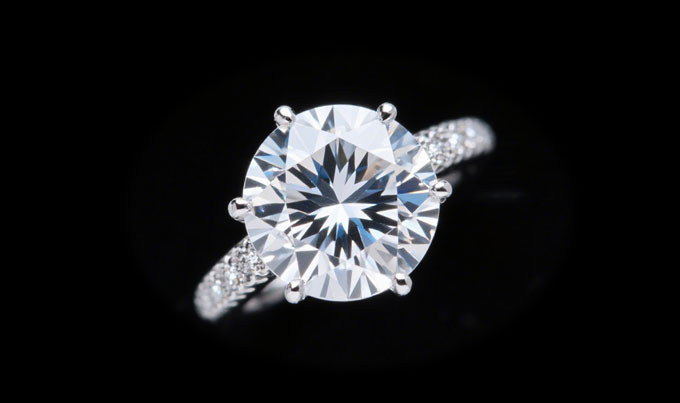When a cultured diamond is placed next to a natural diamond, the naked eye can hardly tell the difference between them – the same fire, the same hardness, and even the same carbon atomic structure. But if you look closely from the perspective of a geologist, the two are like “twins”: the same genes, but with different growth marks.
Scientific essence: the same at the atomic level
From the perspective of material composition, cultured diamonds are exactly the same as natural diamonds. Both are composed of a cubic crystal structure formed by carbon atoms through SP³ hybrid orbitals, and have exactly the same physical and chemical properties:
The Mohs hardness is 10, which can easily scratch sapphires (level 9);
The refractive index is 2.417, creating a signature fire;
The density is 3.52g/cm³, and it will sink in a diiodomethane solution.
The Gemological Institute of America (GIA) clearly states: “Laboratory-grown diamonds are real diamonds, and their properties are no different from mined diamonds.”
Dimension of difference: The lines of time and the imprint of space
What really distinguishes the two is the “identity code” left during the formation process:
Difference in growth time:
Natural diamonds need to spend 10-30 billion years to form 160 kilometers underground, while cultured diamonds can “mature” in as fast as 2 weeks. The long time gives natural diamonds more nitrogen inclusions (about 98%), while cultured diamonds are generally purer.
Growth line identification:
HPHT diamonds grow in a molten metal environment, leaving a cross-shaped phosphorescent pattern; CVD diamonds show layered growth lines. The octahedral growth lines of natural diamonds, like tree rings, record the movement trajectory of the earth’s crust.
Energy imprint:
Natural diamonds may carry weak fluorescence due to long-term contact with underground radioactive elements; the fluorescence characteristics of cultured diamonds depend on technical parameters. In 2023, the Antwerp laboratory launched the “diamond traceability test”, which can achieve an accuracy rate of 99.8% by analyzing the combination of trace elements.
Value division: natural gift and technological aesthetics
In the field of jewelry identification, the certificate of cultured diamonds will clearly mark “Laboratory-Grown”. This distinction is not quality discrimination, but respect for the different value logic of the two:
Natural diamonds carry the miracle of the earth’s 4.6 billion years of evolution, and each carat consumes 250 tons of ore;
Cultivated diamonds condense the wisdom of human beings to break through nature, and only 20 kWh of electricity is required to produce 1 carat (CVD method).
The current consumer market is forming a new consensus: choose natural diamonds (annual output of 130 million carats) for value preservation, and choose cultured diamonds (global production capacity has reached 26 million carats) for cost-effectiveness and environmental protection. As the chairman of the British Jewelry Association said: “This is not a debate about authenticity, but a choice of whether to use the civilization of the Stone Age or the Silicon Age to witness love.”
The ultimate answer:
From the perspective of molecular structure, they are the same substance; from the perspective of cultural symbols, they are different choices. When the Chinese Academy of Sciences can produce 8-inch wafers with cultured diamonds, and when Christie’s sells a natural pink diamond for $4 million, perhaps we should think more about: Do we need a stone to witness eternity, or do we need a carrier to carry our thoughts?
